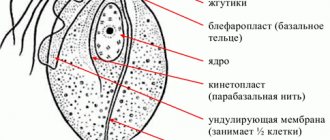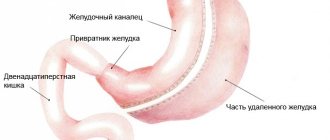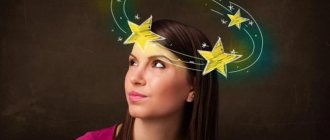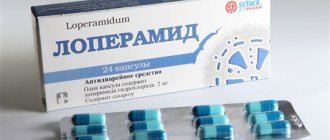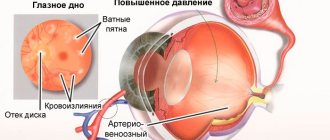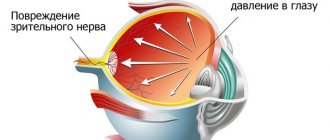From this article you will learn: what are the precursor symptoms and main symptoms of stroke in women. First aid for a stroke for yourself and a stranger.
Author of the article: Victoria Stoyanova, category 2 doctor, head of the laboratory at the diagnostic and treatment center (2015–2016).
Article publication date: November 23, 2016
Article updated date: 10/22/2019
The symptoms and signs of stroke in women and men are the same, the only difference is that women more often do not pay attention to the warning signs of a stroke and endure them on their feet.
Causes of stroke in women
A stroke involves blockage of blood vessels, which leads to oxygen starvation and death of nerve cells in the brain. The process proceeds quite quickly, although sometimes it takes several hours or even days, when the first symptoms appear in advance, but are not very pronounced. The reasons for the appearance may be heredity and genetics, chronic heart or kidney disease, hypertension, bad habits, obesity, constant stress and a secondary case of stroke. Although the reasons lie in other things, so even pregnant women are susceptible to stroke due to the high load on the body. The main number of problems lies in the hormonal background and physiological characteristics.
Precursors of stroke
Acute cerebrovascular accident can occur unexpectedly, but most often it develops against a characteristic background. There are several early signs and symptoms of a stroke. If at least two manifestations from the above list are detected, you must immediately seek medical help.
Here are the main signs of an impending stroke:
- severe and persistent headache without clear localization, which is not relieved by painkillers or goes away under their influence only temporarily;
- dizziness that begins at rest and intensifies when moving;
- persistent or transient tinnitus;
- problems with memory for present-tense information;
- loss of coordination due to numbness of the extremities is another precursor of a stroke;
- decreased sleep quality, fatigue, deterioration in performance.
Research has revealed atypical signs of an impending stroke. They are more often detected in adult women, but are also typical for men. Patients may experience increased heart rate, shortness of breath, dry mouth, or pain in one side of the body. This also includes mental state disorders in the form of disorientation and disorders of consciousness.
Symptoms of a stroke
Stroke symptoms in women are not particularly different from those experienced by men. Although the course may be different, as well as the consequences. Everything depends on the location of the lesions, the degree of stroke, the extent of the lesion and the speed of medical care. So, within a couple of days, slight trembling, confusion in words, or stuttering when walking may appear. And even then you need to consult a doctor, since the disease will progress, increasing symptoms and severity.
Typical
Speaking about the typical manifestations of a stroke, it is worth highlighting:
- dizziness
- nausea
- loss in space and time, coordination
- numbness of the limbs
- paralysis
- problems with speech or memory
Atypical
Atypical symptoms are slightly less common, and men are almost not susceptible to them. But this also happens to women:
- unstable psychological state
- increased heart rate
- sudden change in body temperature
- numbness of the lower face
If you notice only the first or minor symptoms of a deterioration in your health, consult a doctor immediately. Because over time everything will only get worse, leading to irreparable consequences, sometimes to coma or death.
First signs of illness
The main problem is that the fair sex tries not to notice the first signs of a stroke while the omen stage develops. Such a passive attitude towards one’s own health can cause severe disease development and death. The presence of precursors of a stroke in women can be recognized as soon as blood circulation in the brain begins to be disrupted. Traditional three signs:
- Pain in the head and cervical region, sometimes unbearable.
- Weakness and dizziness.
- Noises in the head, ringing in the ears.
Some patients experience nausea when a stroke is imminent, which may later lead to vomiting. Even at an early stage of the disease, speech pathologies, a decrease in the degree of skin sensitivity, changes in coordination, increased sweating, and numbness of part of the face or some parts of the body may be observed. This indicates that a stroke is approaching.
Symptoms of ischemic stroke
Ischemic stroke is something that affects more than 70% of patients. The disease occurs in the front, back, left, right parts of the brain. The severity of the stroke and further consequences will depend on this. Symptoms of ischemic stroke in women are general and universal. We are talking about loss of the ability to speak or see, partial loss of memory, mental disorder, numbness of the limbs, vomiting, headache or dizziness. Everything depends on the location, so the right hemisphere is responsible for motor functions, and the left hemisphere for psycho-emotional ones.
Stroke - consequences for women
Almost 90% of patients experience various consequences after a stroke, some of them are short-term, others are incurable even after recovery. Most often, patients encounter the following symptoms:
- partial memory loss;
- decreased physical activity;
- decreased visual and hearing acuity;
- paralysis of a body part;
- speech defects.
Much in this matter depends on the age of the patient, the location of the stroke and the type of pathology. A younger body (up to 35 years old) recovers faster; the remaining neurons can replenish the loss of brain nerve cells within three months. After the age of 40, some body functions are not fully restored, especially cognitive and mental functions.
In young women
Girls aged 20-30 recover faster and are less susceptible to strokes. But if there is no help in the first hours after an attack, you may encounter a number of consequences:
- decreased visual acuity;
- temporary or partial memory loss;
- paralysis of one part of the body;
- convulsions;
- loss of sensation;
- hearing loss.
Impaired motor activity can be overcome during the rehabilitation period, although loss of coordination of movements can be observed for another six months after the stroke.
In the elderly
Nerve cells in the brain of older women die faster and are almost never restored. Therefore, the consequences after an attack are more varied and serious, some cannot be treated:
- complete paralysis
- speech defects
- vision and hearing loss
- loss of sensation
- problems with the genitourinary system, heart and kidneys
- cerebral edema
- coma
- problems in coordination of movements
The main feature of the consequences of a stroke in elderly women is problems in recovery, the inability to return some functions in full. The rehabilitation period can last up to a year with a risk of relapse in the first five months.
Also, the consequences after a stroke will differ, depending on the area in which the lesion was located. For example, the right hemisphere is responsible for emotions and intuition, memory and perception, helps process information, and distinguish colors. The left hemisphere is responsible for logic, language abilities, hearing, vision and motor functions.
Most experts note that the left hemisphere recovers faster after a stroke.
If the focus of the stroke was in the left hemisphere, then after the attack you may encounter the following manifestations:
- speech defects;
- decreased vision and hearing;
- paralysis;
- numbness and cramps;
- loss of sensation;
- loss in space and time;
- problems with fine motor skills.
Left-sided stroke is most often of the ischemic type or refers to micro-strokes. In this case, it takes up to six months to a year to combat the consequences.
It is most difficult to recover from a right-sided stroke, especially at the age of 40-50 years. Impairments in memory, perception of colors and the surrounding world can manifest themselves for up to two years; patients often suffer from mental disorders. Main consequences:
- decreased mental abilities;
- mental disorders;
- memory loss;
- difficulties in processing information and remembering;
- inability to distinguish colors.
Much in the process of recovery after a stroke depends on the type of pathology, the main of which are hemorrhagic and ischemic.
Ischemic
Ischemic stroke involves the presence of blood clots and plaques that impede blood circulation, which causes oxygen starvation of brain cells. Ischemic is found in 70% of cases; it is much easier to overcome the consequences and more time is allocated to save a life. The main consequences after ischemic stroke in women:
- paralysis and swelling of the limbs;
- loss of sensation;
- speech defects;
- decreased visual and hearing acuity;
- partial memory loss;
- impaired coordination of movements;
- problems with fine motor skills.
Hemorrhagic
Hemorrhagic stroke is less common, only in 30-40%, but the consequences of an attack are much more severe. That's all, because a hemorrhagic stroke leads to hemorrhage in the brain, rupture of blood vessels, and instant death of nerve cells. In this case, it is important to stop the seizure within the first two hours. The main consequences for women include:
- cerebral edema;
- coma;
- failure of organs such as kidneys, liver;
- myocardial infarction;
- complete paralysis;
- memory loss;
- blindness;
- hearing loss;
- mental and mental disabilities.
Often, hemorrhagic stroke in women leads to death, this happens in 40% of cases, after cerebral edema or coma. It is almost impossible to fully overcome the consequences of a stroke, especially after 40 years.
Common causes of stroke in the fairer sex aged 18–44 years:
- childbirth;
- pathological pregnancy;
- 2nd–3rd period of gestation;
- taking oral contraceptives;
- migraine;
- arterial aneurysm;
- rheumatic and congenital heart valve defects.
Most often, impaired blood flow to the cerebral vessels is associated with childbirth or taking contraceptive medications.
During pregnancy and childbirth, a woman is at risk of acute circulatory disorders in 7 cases per 100 thousand women. Pregnant women have increased blood clotting, so there is a risk of blood clots in the 3rd trimester. Complication of pregnancy with hemorrhagic stroke in the 3rd trimester is the main cause of death in women.
Stroke often develops in the third trimester of pregnancy (closer to childbirth) and in the postpartum period
In young women, stroke can develop due to heart defects. Mitral valve prolapse occurs 3 times more often in women than in men. The risk of developing acute cerebral circulatory disorders with this disease in young women increases 4 times. Ischemic stroke at a young age occurs without loss of consciousness. A severe form of catastrophe in the brain develops in women due to heart disease.
Migraine
The risk of stroke increases in young women suffering from transient cerebrovascular accidents due to migraine. This disease is characterized by severe pain in one side of the head, accompanied by nausea and vomiting. At the onset of an attack, the blood vessels narrow sharply, which can cause the development of an ischemic stroke.
Hormonal contraception thickens the blood and increases the risk of stroke in young women. Hormonal contraceptives are contraindicated in women at risk for stroke. These include persons with obesity, arterial hypertension, diabetes mellitus and hereditary predisposition.
A number of weight loss medications contain the harmful component phenylpropanolamine, which causes hemorrhagic stroke in young girls. The harmful component is contained in ready-made weight loss products “Dexatrim” and “Akutrim”. Russian health authorities have worked out a procedure for removing these drugs from the pharmaceutical market.
Some weight loss products increase the risk of heart attacks and strokes
Factors leading to impaired blood flow in the brain in women accumulate over the years.
Common causes of stroke in the fairer sex 45-60 years old:
- menopause;
- heart muscle or valve defects;
- diabetes;
- stress;
- decreased physical activity;
- hypertension.
Menopause
Hormonal changes in women occur after 45 years of age during menopause. During this period, blood pressure rises. Hormone imbalance leads to obesity and high cholesterol. Hormone replacement therapy eases menopause and reduces the risk of stroke.
After the onset of menopause, women have an increased risk of stroke
Mitral valve stenosis, or mitral stenosis, doubles the risk of cerebrovascular accidents, even if there are no other risk factors. Other defects that lead to stroke include patent oval window and atrial septal aneurysm. Poor blood circulation in the brain occurs due to a blood clot that forms in the heart and travels to the brain.
Excess weight is another step that brings the onset of a stroke closer. The most dangerous sign of excess weight is the deposition of fat in the abdomen and waist. The very fact of abdominal obesity is a harbinger of hypertension. With abdominal obesity, women's waist increases to more than 88 cm.
If you are obese, it is important to monitor your diet and diet. In addition to diet, physical activity is recommended. The duration of daily exercise is at least 30 minutes daily or several times a week for 1 hour.
Abdominal obesity is strongly associated with stroke risk
Stress
Nowadays, stress is the cause of acute cerebrovascular accident at any age. It is very important to learn to disconnect from problems and control your emotions. The most dangerous stress for health is chronic stress. Constant tension leads to increased blood pressure, the next step after which is a stroke.
Lack of physical activity is a 16% risk of stroke. An inactive lifestyle leads to blood stagnation and obesity. At the same time, physical exercise stimulates metabolic processes, improves blood circulation, and reduces weight and cholesterol levels. Effective physical activity is 30 minutes daily or 1 hour three times a week.
A sedentary lifestyle is one of the risk factors for stroke
Although stroke is becoming younger, it remains the sad prerogative of older people 65 years of age and older. At 80 years old, the risk of developing a brain catastrophe is higher than at 50 years old.
After 60 years of age and older, stroke occurs in women for the following reasons:
- arterial hypertension;
- obesity;
- hypercholesterolemia;
- atrial fibrillation;
- carotid artery stenosis;
- diabetes;
- smoking;
- suffered a heart attack.
Symptoms of hemorrhagic stroke
The symptoms of hemorrhagic stroke are not particularly different from ischemic stroke, but are more acute. And the disease itself is much more dangerous. After all, blood vessels rupture with the penetration of red blood cells through the walls of the heart. This is irreversible and affects the entire state of the body.
But in this case, the symptoms will concern not only dizziness, vomiting and memory loss, but also paralysis, high blood pressure, migraines, and sudden changes in temperature. But even here everything depends on the location of the lesions, which only a doctor can diagnose. It is noteworthy that the disease manifests itself on the parallel side of the inflammation.
Atypical signs
Ischemic strokes are more common in women compared to hemorrhagic strokes. However, both types of the disease have similar symptoms. But the occurrence of atypical manifestations for women is quite likely. It is the unconventional symptoms that mislead patients and doctors. Among the atypical components of the clinical picture are:
- Frequent attacks of hiccups.
- Decreased hearing acuity.
- Dry mouth.
- My face hurts a lot.
- Increased heart rate.
- It is difficult to breathe, shortness of breath appears.
- In rare cases, breathing stops.
- Chest pain near the heart.
- Eye pain.
- Convulsive states.
Some manifestations of a stroke repeat the signs of a heart attack, so a detailed diagnosis should be carried out by a doctor.
Symptoms of stroke in young women
Since even young girls are now susceptible to stroke, it is important to understand how the disease progresses. It often manifests itself as fatigue, severe headaches, nervousness, loss of coordination, slurred speech, or decreased sensation. They often appear several hours or even days before the attack itself, and are often attributed to general fatigue and exhaustion. But, if you have previously been exposed to stress or suffer from hypertension, then this may be a sign of a stroke.
Test for stroke
If you experience symptoms characteristic of a stroke, you need to perform a few simple tests. It will only take a couple of minutes, and the results will most likely allow you to make the correct primary diagnosis.
Here are four tips for recognizing a stroke:
- Let the person smile. If the brain is damaged, one half of the face will remain motionless.
- Have the person raise their hands forward. In the event of a stroke, only one arm will lift, and muscle weakness will be evident in the other.
- Let the person say a simple phrase. Difficulty with articulation indicates a cerebrovascular accident.
- Let the person stick out his tongue. In case of pathology, its tip will deviate to the side - towards the source of tissue damage in the brain.
If at least one of the tests fails, there is a high chance that the person is having a stroke. From the moment the first obvious symptoms appear, there are 3-4 hours during which the patient should receive emergency care. This increases the likelihood that permanent pathological changes resulting from bleeding in the brain or disruption of blood flow in its tissues will be avoided.
Risk factors
Even if you lead a healthy lifestyle and don’t have any bad habits, there are risk groups that can still lead to the development of the disease. We are talking about hypertensive patients, smokers and drinkers, those who are obese, or those with heart or kidney problems.
Migraine
Oddly enough, migraine can lead to the development of a stroke, since under stress, changes in weather, climate or heavy loads when working at a computer, the blood vessels are under constant pressure. They are constantly contracting, expanding, and the load is distributed chaotically. This can starve the nerve cells in the brain, leading to the development of a stroke.
Diabetes
Diabetes has a general detrimental effect on the body, and the brain is no exception. Because the walls of the heart and blood vessels become thinner, the blood becomes less viscous, and blood clots can form. Such patients should be constantly examined by a doctor and take medications.
High blood pressure
High blood pressure is a factor that leads to headaches, fatigue, and uneven functioning of blood vessels. Therefore, pressure surges and constant expansion and contraction of blood vessels lead to oxygen starvation, and, therefore, the death of nerve cells in the brain.
Taking contraceptives
Taking contraceptives and birth control leads to disruption of all body functions, hormones begin to be produced in large quantities, blood pressure accelerates or slows down, and constant changes occur. Such unstable hormonal levels for a weak body can cause a stroke. And girls taking them must visit a doctor and have a diagnosis done before starting the course.
Hysterical character and increased anxiety
A hysterical character and increased anxiety already indicate a disruption in the activity of some parts of the left hemisphere of the brain, therefore, under stress or the appearance of irritants, pressure begins to increase, and the functioning of the cerebral cortex becomes abnormal. Not only nerve cells suffer, but also neurons responsible for psycho-emotional processes.
Excess weight
Excess weight complicates life and leads to high cholesterol, diabetes, and chronic heart disease. As a result, these people are at risk of developing a stroke, since all processes and systems of the body are disrupted, and the body requires more strength and energy to maintain life.
Here you will learn about preventing stroke in women: proven methods and recipes
And in this article we will talk about typical and atypical signs of stroke in women https://insult-med.com/vidy/tipy/u-zhenshhin/priznaki-insulta-u-zhenshhin.html
How to recognize the initial development of the disease?
Precursors of ischemic cerebral stroke are known to few patients. However, they can be recognized by peculiar symptoms that signal a violation of proper blood circulation in the patient’s body.
Early detection of a stroke is only half the battle. The sooner a person gets to a neurologist who will select the necessary treatment for him, the sooner he can return to a full life.
Precursors of ischemic stroke are quite difficult to recognize, especially for an ordinary patient without experience and special education. As a rule, with such a pathological condition, a sharp jump in pressure occurs, which leads to rupture of the vascular wall, and the patient suddenly loses consciousness.
How to notice the symptoms in time?
You can diagnose a stroke on time, even in advance, if you go to see a doctor and be attentive to your well-being. At the same time, an external examination and a number of tests will be carried out. Next, an examination is prescribed with blood and urine donation, tomography and cardiography, and ultrasound. Only a full-fledged complex will allow you to most accurately determine the cause, type of stroke, possible locations, root causes and prescribe treatment. In addition, a course of prevention will be developed for the patient.
What is a brain stroke?
A stroke is usually called a cerebral stroke - an aggravated failure of blood supply that appears in the vascular network of the brain. A stroke can occur under different circumstances and for different reasons, for example: thrombosis, hemorrhage, spasmodic phenomena, etc. As a result, some part of the brain stops receiving blood and can remain unharmed and capable only for a short period of time. Therefore, the pre-stroke condition requires urgent medical attention.
In this situation, fear and confusion are unforgivable. Activities must be carried out smoothly and quickly. If everyone has the skills to help, then the patient will have a better chance of survival, and of recovering from a stroke and continuing to live a full life.
First aid for stroke
First aid for a stroke is to ensure access of oxygen to the patient's lungs. To do this, unfasten all zippers and buttons, open doors or windows, turn your head to the side, and position your body horizontally. In this case, the head should be slightly higher than the shoulders, about 30 degrees. At the same time, do not panic, try to keep the victim conscious, bring him water, help with vomiting and wait for the ambulance to arrive.
If you follow the basic recommendations and rules, the result of further treatment will be effective.
How does a stroke manifest itself in the following stages?
Symptoms of a pre-stroke often make themselves felt at night, so many do not notice them. And there is a possibility of developing an acute stage of the disease without previous signs, which often happens in the morning after sleep. At lunchtime, attacks can also occur, and often before this, patients have to experience severe psychological stress, insomnia, migraines, and drinking large amounts of alcohol.
Within two to three hours, the full picture of the disease in women unfolds. Sometimes it can happen the next day. In such a situation, the severity and severity of symptoms increase gradually. And if a woman has a blood clot that has blocked a cerebral artery or venous vessel, then the symptoms will come suddenly and be acute.
Further symptoms depend on which part of the brain is damaged and what role the blocked artery plays in the brain. Precursors can be divided into focal and cerebral. Focal stroke symptoms that appear in only one part of the brain include:
- A sharp deterioration in vision (the patient may temporarily go blind).
- The eye twitches and trembles.
- Numbness in a leg or arm on one side.
- The sensitivity of the skin is impaired.
- Hearing acuity decreases.
- There is a ringing in my head, an inexplicable noise,
- Headache in certain places.
- While trying to walk, the person staggers.
- Speech is impaired.
- Loss of consciousness.
- Memory losses.
- Impaired defecation and urination.
- Fainting.
- Confusion.
General cerebral symptoms include:
- Vomiting.
- Repeated weakness.
- Nausea.
- Panic feeling of fear, the patient is afraid of dying soon.
With sudden movements and turning the head, these signs of a stroke become more pronounced.
Very rarely, cerebral hemorrhage occurs during a stroke. However, you need to know about its manifestations:
Paralyzed limbs.
Sharp pain in the head that is unbearable to endure.
Fainting, coma.
In the most severe cases, a major stroke can cause a person to die before an ambulance arrives, or in the hospital room. This condition may portend a lack of eye reaction to light, stopping of the pulse, breathing, and a drop in body temperature. Therefore, the signs of stroke and micro-stroke in women and first aid should be known to everyone. It is enough to observe at least one sign to go to the hospital.
“BE FAST” test
The test consists of 5 verification exercises. If a person cannot perform at least one of them, he must immediately call an ambulance.
FAST Stroke Test
| Decoding | Characteristic symptoms |
| Balance - balance | The gait is unsteady and confused. Often resembles the tread of a drunken person. |
| Eyes - eyes | Ask the victim to describe what she sees. What if you close one/other eye? A stroke is characterized by complete/partial blindness or the inability to describe what is seen. |
| Face - face | Ask to smile and then stick out your tongue. The smile is crooked, one corner of the mouth is downturned. The tip of the tongue deviates from the midline. |
| Arms - hands | Ask the person to raise two hands. The second will remain lowered, will be lower or will quickly fall. |
| Speech - speech | The answer to any simple question will help determine how well a person’s speech is preserved. |
| Time - time | Any detected deviation is a direct indication to call an ambulance. |
Intensive care and recovery
Doctors identify a therapeutic window during which stroke treatment will be effective. The sooner the victim enters the intensive care unit, the higher the likelihood of a positive outcome.
Therefore, the sooner a person feels the first symptoms and realizes that a stroke has occurred, the higher the chances of recovery. Young people may not pay attention to feeling unwell and may not immediately recognize a stroke. The symptoms and first signs in men after 30 years differ little from the symptoms of the disease in the older generation. The appearance of obvious symptoms of a stroke should not be ignored in both men and women. It is impossible to survive the disease on your legs, and the likelihood of achieving a negative outcome increases many times over.
Intensive therapy
After intensive care is provided and the patient’s condition is stabilized, the rehabilitation process begins. The attending neurologist adjusts prescriptions in accordance with the severity of symptoms and the nature of the disorders and coordinates the work of other specialists.
The main method of treatment is drug therapy. In addition to drug support, other methods of recovery are actively used for the first time: physical therapy, massage, physiotherapy. The consequences of a stroke in men and women include not only movement disorders, but also changes in behavior and problems with speech. A psychologist works for cognitive disorders and behavioral deviations, and a speech therapist works for speech disorders.
Early initiation of rehabilitation therapy brings enormous clinical benefits
It is very important after discharge to continue the entire range of rehabilitation measures for at least a year to eliminate the consequences as much as possible. Compliance with all recommendations of the attending physician will not only improve the patient’s quality of life and functioning, but will also help reduce the risk of recurrent stroke and complications
The gradual restoration of body functions will lead to increased independence of a person in everyday life and a decrease in disability.
Video about the successful recovery of the victim:
Atypical symptoms
The atypical course of a stroke is the absence of paralysis, loss of vision, or loss of coordination in the clinical picture of the disease. It is more typical for women than for men: 28%, 19%, respectively.
An atypical brain stroke may manifest itself:
- loss of consciousness;
- general weakness;
- shortness of breath or difficulty breathing;
- disorientation, confusion of thinking;
- excitement;
- nausea and/or vomiting;
- pain;
- convulsions;
- hiccups.
How to help the victim
The further prognosis of treatment depends on how first aid is provided at home. But not everyone knows what to do at the first signs of a stroke.
Tell the visiting doctors what medications were given to the patient and how much the victim’s indicators have changed since the onset of the pathological condition. If possible, prepare all medical documents about the woman’s diseases (extracts from the hospital, results of a medical examination) before the arrival of the medical team. Additional information will help doctors when selecting a course of rehabilitation treatment.
Nutritional Features
Pre-stroke (symptoms, the first signs in women can be varied and do not indicate an approaching vascular crisis) is a disorder in the functioning of the central nervous system, which must be treated not only with pharmacological drugs, but also with the development of a special dietary diet.
One of the main methods of rehabilitation of vascular crises includes changing food priorities.
A balanced food intake, compiled by a nutritionist, will help to understand the root cause of the pre-stroke condition. In the diet, the medical specialist takes into account the use of permitted and exclusion of prohibited foods.
These include:
| Can | It is forbidden |
| Vegetable crops. | White bread. |
| The fruits are unsweetened. | Sweet flour products. |
| Cereals (dosed). | Dairy products. |
| Lean poultry meat. | Refined oil. |
| Sea fish. | Spicy and salty foods. |
| Virgin fruit vegetable oil. | Canned food. |
| Freshies. | Sausages. |
| Green tea, unsweetened compote. | Marinades, mayonnaise. |
| Fermented milk and products made from it. | Carbonated drinks, coffee. |
| Bread products made from wholemeal flour. | Alcohol. |
A prerequisite for the post-pre-stroke diet is split meals - you cannot overload the vascular system with large volumes of single meals. The daily diet should be divided into 5-6 meals at intervals of 2-2.5 hours. Food must be prepared using a gentle method - boiling or stewing.
Causes of pathology
Pre-stroke - symptoms (the first signs in women can appear at any age) of the disease depend on the root causes that provoked the pathological process. The main points that provoke a temporary disturbance of blood circulation in the main organ of the central nervous system include some reasons.
They are as follows:
- intense and prolonged muscle work;
- pronounced psycho-emotional experience of conflicting life situations that limit social or biological needs;
- surges in pressure that liquid connective tissue exerts on the walls of blood vessels;
- dystrophic disorders in the articular cartilage of the cervical spine;
- changes in the force with which air presses on objects located on the surface of the Earth;
- a condition caused by the psychoactive effect of drinks containing wine alcohol;
- increased body temperature and disruption of the functions of vital systems of the body, especially the central nervous system;
- prolonged exposure to the cold in damp weather;
- physical inactivity;
- accumulation of fat in the body, leading to excess body weight;
- poor nutrition;
- consumption of large amounts of refined fats;
- monotonous and monotonous work;
- lack of physical activity;
- dependence on an alkaloid found in the stems and leaves of tobacco.
Figures and facts
- More than 400,000 strokes are registered annually in Russia, with a mortality rate reaching 35%.
- The overall risk of recurrent stroke in the first 2 years after the first stroke ranges from 4 to 14%.
- With an increase in potassium intake with food (potatoes, beef, bananas), a significant decrease in blood pressure was noted in individuals with moderately elevated levels by 11.4/5.1 mm Hg. Art.
- In patients receiving diuretics (diuretics) for a long time, hypokalemia develops (diagnosed when the potassium concentration is less than 3.5 mmol/l) and an increase in the incidence of cardiovascular complications.
- By increasing daily potassium intake by 10 mmol (for example, when taking the drug potassium and magnesium aspartate), the risk of fatal stroke is reduced by 40%.
Treatment
Pre-stroke - symptoms (the first signs in women cannot be ignored) of an impending crisis require immediate medical attention. Treatment of circulatory disorders in the brain consists of a set of emergency and restorative therapy measures.
This should include:
- making the correct diagnosis and detecting the location of pathological changes;
- normalization and maintenance of adequate hemodynamic parameters;
- protecting the tissue of the central nervous system from a recurrent attack;
- improvement of blood circulation in the ischemic area of the brain;
- rehabilitation methods for restoring impaired body functions;
- treatment of the root cause that provoked the pre-stroke condition.
What to do at the first signs
At the first signs of a stroke, the patient must be hospitalized. Only in a hospital setting will she be able to receive effective treatment. While waiting for an ambulance, everything must be done to alleviate the patient’s condition. First of all, it should be laid down. If vomiting begins, turn your head to the side to ensure unimpeded exit of vomit.
Stroke in women causes sharp increases in blood pressure. If there is an increase in constant values, the patient should be given a drug that lowers blood pressure. The tablet should be taken sublingually, that is, placed under the tongue. In addition, a diuretic can be given. The arriving specialists must be told about all the treatment measures taken, provide the names and dosage of the medications used, and inform about the presence of chronic diseases in the patient.
Differential diagnosis with migraine
Hello! Please tell me. Yesterday morning I didn't feel well. First, my head began to hurt badly (forehead and temples, then the back of my head), then I developed severe shortness of breath (after walking a few meters with the child in my arms, it became difficult to breathe), after a while, while sitting, my legs went numb, then my arms, and then my face. Shortness of breath persisted. After 15 minutes, I went to the open window, stood there, got some air - it felt a little better, then all the symptoms went away at once. What could it be? Thank you.
Hello. Please tell me, my mother (she’s 60 years old) lost her right arm, her speech was inhibited, she couldn’t answer questions clearly. Could this be a mini-stroke? They called a doctor, he doesn’t really say anything...
2 days ago I fell on the street and hurt myself on my right side, yesterday I felt numbness in the right corner of my lower lip, my blood pressure rose to 154/115. How can you support yourself?
Hello. Please tell me, this is the second day I have been tingling in the area of my heart. What could this be? I have VSD.
Good afternoon. Tell me what the diagnosis might be. While eating, she suddenly became ill, her vision darkened, a sharp noise appeared in her ears, and she suddenly lost consciousness. I woke up - they brought me back to my senses. I felt sick, vomited, had severe weakness, sweating; I couldn’t sit up on my own, my speech was sluggish, and when asked, I couldn’t immediately find the right word in another language (although I speak fluently). It happened abroad. They took him to the hospital. They checked the blood, they say everything is fine, it is possible that it is intoxication or an allergy from seafood. I have never had an allergy to seafood. They held me for three hours and released me. I barely made it home in the passenger seat. I slept until 2 pm the next day; I was very weak all day. Could this be a mini-stroke? Do I need to undergo additional examination?
Good afternoon, my mother had a situation like this a month ago, she bent her head down and she felt dizzy and she stood silently for about 5 minutes, didn’t answer questions, then when she started speaking she couldn’t speak, she took away her tongue and then after 5 minutes it all went away, tell me what it could have been and how we should be
I am very afraid of a stroke, my mother died during this attack, so I inherited weak blood vessels. Now I constantly monitor my blood counts, to thin it I constantly drink acetylsalicylic acid (prescribed by a cardiologist) and that’s it. Blood viscosity is normal for my age. But I’m still afraid, what else can I do or take to reduce the risk further? I just live in the area and doctors, to put it mildly, don’t pay much attention.
Hello. I thought I was the only one complaining about an incomprehensible disease. and after reading all this, it still surprises me why doctors cannot help us in such situations. Their first aid is simply to give painkillers and that’s it. This has happened to me more than once, and still no one knows why this happens and the doctors don’t know. Everyone has the same answer: neurology. constantly tinnitus, endlessly dizzy, weak to the point of inability to walk, I get tired after a short walk, fainting, numbness under the shoulder blade on the left and then gradually throughout the body, it’s especially not so pleasant that the jaw goes numb; in general, I now feel so unpleasant not a very good disease. I’ve even gotten used to it, I’m not as afraid as I was the first time, I’m used to seeing doctors, I don’t want to go to the doctors anymore because it’s useless, it’s a fact. If anyone knows please help me get rid of this disease. Is there anything that cures this. thank you in advance.
do an MRI of the brain
What are the differences between the warning signs of stroke in men and women?
One of the main differences is the age of the patient. According to medical statistics, the most commonly affected female population is people over 60 years of age, while for men the cutoff age is 40 years.
Due to the heavy load on the female body during gestation, as well as a host of chronic diseases in expectant mothers, there is a possibility of developing stroke lesions and post-stroke conditions in pregnant women .
Analyzing the complex of symptoms that precede stroke problems among representatives of different sexes, we can conclude that the female body is more inclined to exhibit “nonspecific” reactions during such a period. In men, the manifestations are more classical in nature, which facilitates preliminary diagnosis and makes emergency prevention possible.
This may be why the percentage of complete recovery of the body after a stroke is higher among men than among women. Post-stroke consequences have a less negative impact on the condition of organs and systems.
If you have had a brain stem stroke
The stem part of the brain tissue is responsible for almost all vital processes of the body; it has the following functions:
- regulates the functioning of the respiratory and cardiovascular systems;
- maintains normal body temperature;
- coordinates movements, muscle tone;
- helps maintain balance;
- controls the activity of the sympathetic and parasympathetic departments of the autonomic system;
- participates in visual, auditory, taste perception;
- ensures the process of swallowing and chewing food.
When the trunk is damaged, numerous disruptions occur in the basic processes of functioning of human organs and systems. The disease usually occurs in a severe form with a characteristic feature - patients are immobilized, their contacts with the outside world are lost, but consciousness and intelligence are not changed, since the cerebral cortex is not affected. This condition is called locked-in syndrome.
Even with a favorable course of a brainstem stroke, its consequences include the following pathological changes:
- facial paralysis with drooping corner of the mouth and eyelid;
- paralysis of the muscles of the palate, larynx and vocal cords;
- food flows into the nose, choking occurs while eating;
- gait disturbance – staggering, loss of balance, falling;
- difficulty pronouncing words;
- congestion in the lung tissue, pneumonia;
- changes in heart rate and blood pressure.
Health care
Treatment of stroke is divided into 3 stages:
- Acute phase. To reduce cerebral ischemia and reduce intracranial pressure, antihypertensive drugs (ACE inhibitors, diuretics), calcium antagonists (Isoptin, Diazem) and antispasmodics (Drotaverine, Atropine) are used. The patient is provided with rest and external stimuli (loud sounds, bright light) are eliminated. Taking sedatives (Phenazepam, Relium) is also indicated.
- Subacute phase. After cerebral circulation has been restored, the patient is transferred to the general ward. The woman is given vascular therapy and symptomatic treatment is prescribed. To restore motor activity, they give massage, exercise therapy and physiotherapy.
- Late recovery period. The patient is undergoing courses of maintenance drug therapy and is engaged in exercise therapy. Full recovery takes several years.
For large hematomas (outflow of more than 30 ml of blood), before conservative therapy, the accumulated clot is promptly removed to eliminate compression of the brain tissue.
Stroke Prevention
In order to never encounter such a phenomenon as a stroke in women, you need to adhere to a few simple rules, namely:
- lead a healthy lifestyle
- quit smoking and alcohol abuse
- go on a diet
- monitor your blood pressure
- do physical education
- avoid stress
- eat less salt, drink more water
- to walk outside
- cure heart or kidney disease
- Constantly undergo examinations and diagnostics by a doctor
Simply by taking care of your health and following your doctor's instructions, you can remain healthy and beautiful for many years. And some will never know from their own experience what a stroke can be like and how dangerous it is for the body.
Causes
Acute cerebral circulatory disorders occur as a result of blockage of the vessels responsible for cerebral circulation (an ischemic type of pathology develops), or as a result of a sudden rupture of a vessel (hemorrhagic type).
Ischemic stroke in men and women occurs as a result of arterial hypertension and atherosclerosis. Common factors for both sexes that cause hemorrhagic stroke: arterial or arteriovenous aneurysms, hypertension.
What causes it in men?
The causes of stroke in men are often alcohol abuse and smoking. These bad habits cause surges in blood pressure, prolonged vasospasm, resulting in heart disease and degenerative processes in the cerebral vessels. In addition, the pathological condition is caused by stress, poor diet and excess weight, metabolic disorders, as well as age-related changes against the background of the progression of somatic diseases.
In men over 65 years of age, the main causes of the disease are arterial hypertension and high cholesterol.
Important information: Can an adult have a high temperature during a stroke and why does it rise?
Why does it occur in women?
Diseases of the cardiovascular system, endocrine pathologies, severe concomitant somatic disorders and infections are the main causes of stroke in women. This disease mainly affects women over 60 years of age. However, cases of its development in middle-aged women are increasingly being recorded. The ischemic type of pathology often occurs at 18-40 years of age.
Factors that can trigger a sudden stroke include:
- Long-term use of oral contraceptives.
- Pathological course of pregnancy.
- Predisposition to blood clots due to hormonal imbalance and menstrual bleeding.
- Often occurring migraine attacks against the background of spasm of cerebral vessels.
Increased emotionality, constant mood swings and low resistance to stress are also prerequisites for pathology. In addition, stroke often occurs from addiction to bad habits. Smoking provokes vasospasm and intoxication of the body, contributes to the development of ischemic heart pathology and degenerative processes in cerebral vessels.
In older women, the main causes of the disease are:
- Atrial fibrillation.
- Narrowing of the carotid arteries.
- Cardiac ischemia.
- Cardiovascular failure.
Characteristic signs of stroke in women: how the symptoms of a female stroke differ from a male stroke, photo
Stroke is a disease with a “woman’s face.” This is precisely the “glory” of stroke: among adults it is the most common brain disease.
And the older the person, the higher the risk. Depressing numbers: stroke affects 0.1 to 0.4% of the population every year.
Fluctuations of tenths of a percent depend on the country of residence.
There are more prosperous countries, with 0.1 percent. And there are also those that exceed the statistical average of 0.4%. It will be clearer if you give another figure: stroke, as a cause of death, is in 3rd place.
He is the undoubted leader in disability. They say about a stroke that it creeps up on the sly and strikes instantly. And it is not always possible to withstand such a blow and recover from it.
Features of the elderly
Throughout life, various deviations accumulate in every person. While we are young and full of energy, we may not notice minor deviations in blood pressure, we are not bothered by slightly elevated sugar levels and are not bothered by rare heart rhythm disturbances. Over time, all these seemingly frivolous disruptions of the body worsen, and with the onset of old age they begin to manifest themselves more and more clearly.
By the age of 50, most patients already have a number of diseases that can lead to the development of a stroke. The main cause of brain damage in old age is atherosclerosis. For this reason, stroke in older people is almost always ischemic.
However, despite the fact that this form of brain damage is considered less dangerous, doctors’ prognoses are rarely optimistic for elderly patients.
This is primarily due to age, which has the following influence on the course of the disease:
- With age, the rate of damage to brain tissue increases significantly, and therefore the risk of death increases. According to statistics, 90% of people over 65 years of age who have a stroke die.
- Elderly people have a much harder time recovering from an attack, and therefore most often the prognosis for rehabilitation is not encouraging. The situation is aggravated by the reluctance of older people to receive proper treatment.
- In patients under 60 years of age, hemorrhagic stroke is more often diagnosed, which is especially severe.
- A stroke after 80 years of age almost always ends in the death of the patient. The chances of surviving an attack do not exceed 5%, and there is no chance of full recovery at all.
- Among patients who have suffered a major stroke in old age, women predominate.
It is worth noting that most often the first symptoms of an attack begin to appear a few days before the tragedy. Micro-strokes appear that remain unattended. Elderly patients do not like to complain about being unwell and are in no hurry to see a doctor. If relatives do not recognize the first symptoms in time and do not call a doctor, a massive stroke occurs.
Healing procedures
Treatment of stroke: very difficult, but there is always a chance.
The chance appears already when, even before the ambulance arrived, the patient was noticed in time, laid down, remained as motionless as possible and with a cold compress on the head.
And if no more than 6 hours have passed from the “attack” of the stroke to being placed in the intensive care unit, the chance of getting out increases.
Then, in the intensive care unit, a patient with an ischemic stroke will receive drugs that dissolve the clot. If the stroke is hemorrhagic, the bleeding is superficial, emergency surgery may be required. to remove the hematoma.
The chosen treatment measures should restore as much as possible those brain functions that have been lost since the moment of impact.
After such emergency measures, the course of treatment will begin. It will not be short-lived. So, a very dangerous disease struck.
Therefore, the patient will begin to take various groups of drugs to correct blood circulation in the vessels of the brain, the first of which will be cinnarizine and fezam. There will be a lot of drugs and injections.
But another doctor’s prescription is no less important—therapeutic gymnastics. They start it with very measured movements, passive in paralyzed arms and legs
But even such movements are extremely important for the lower and upper limbs to recover. In addition, physical exercise will help avoid inflammatory diseases in the joints.
As for speech, and with a stroke its impairment occurs in most such cases, special speech therapy lessons will be needed. And one of the family members can lead them.
Stroke is very common in mature and elderly women. Symptoms of stroke in young women require increased attention.
It must be remembered that a disease is always easier to prevent than to treat, so it is especially important to carry out timely prevention
Stroke treatment
Stroke treatment
- preventing the appearance of cerebral edema and inflammatory processes;
- maintaining life-supporting systems of the body;
- correction of blood clotting and viscosity indicators;
- improving blood circulation;
- normalization of blood pressure;
- reducing the level of psycho-emotional overexcitation caused by disruption of the nervous system.
The second stage of stroke treatment lasts up to 3 weeks. During this period, a woman in a hospital setting is prescribed:
- taking medications that activate the work of nerve cells - neuroprotectors, B vitamins;
- performing passive and active therapeutic exercises to restore motor functions;
- undergoing massage sessions to relieve muscle tone;
- classes with a speech therapist to restore facial and speech functions;
- performing breathing exercises.
After stabilization of the patient's condition, he is discharged from the hospital, and he continues rehabilitation treatment at home under the supervision of the attending physician. To the methods described above, which will need to be performed regularly, the doctor may add:
- undergoing physiotherapeutic procedures - radon and mud baths, magnetic therapy, acupuncture;
- training on simulators;
- periodic health treatment in sanatoriums.
Do you have a question? Ask it to us!
Feel free to ask your questions right here on the site.
If a hemorrhagic stroke is diagnosed, the patient may need emergency surgery, during which blood clots are removed, the integrity of the damaged vessel is restored, and cerebral edema is relieved. After the operation, the woman is prescribed medication to prevent the development of inflammatory processes in the brain tissue, as well as restore blood supply and metabolic processes in its structures.
First aid
Help the person lie down. Place a cushion or small pillow under your head. If you lose consciousness or vomit, place the patient on her side. Provide fresh air if the attack occurs indoors. Unbutton the collar of her blouse, shirt, bra, belt. It is strictly forbidden to give drink, food, or any medications.
Remain calm, reassure the victim, and do not leave her alone. Try to remember, or better yet, write down all the changes that occur, and record the time of their occurrence.
If you have had a stroke, the rules for providing first aid to yourself will be very similar. After calling the doctor, open the entrance lock and wait for the ambulance to arrive in a lying position. It is better to immediately take a lateral position so that in case of vomiting you do not choke. Stay calm and try not to make sudden movements.
Features and types of disease
A stroke often occurs suddenly, literally within a few minutes. Symptoms can persist for more than a day and can lead to death. According to statistics, the number of deaths from vascular pathologies of the brain is in second place among all cardiovascular diseases. And the percentage of disability is the highest.
In just one year, about 450,000 strokes occur in Russia - it affects one Russian every minute and a half.
Stroke is a broad concept that includes such types as:
- Cerebral infarction, or ischemic stroke. Common in older people who have had heart attacks. It develops when the blood vessels that supply brain cells become clogged. They die without receiving the elements important for life.


